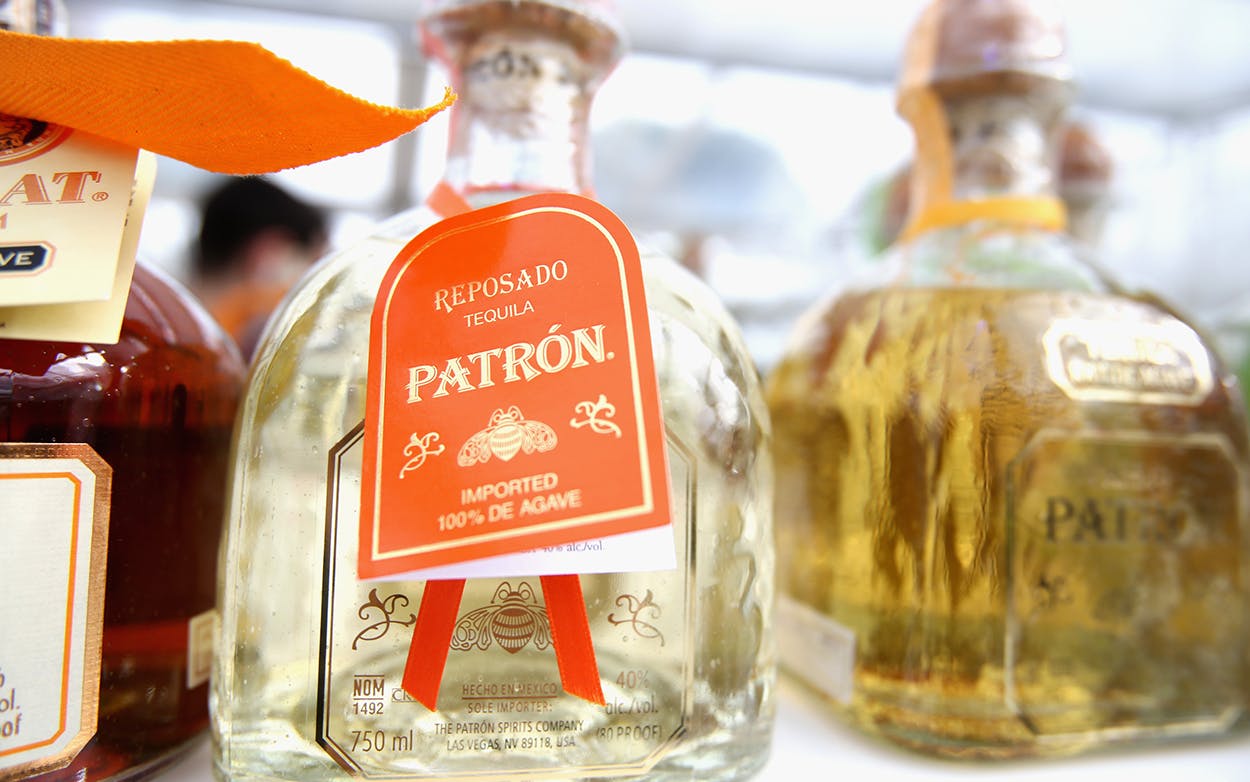On Tuesday, tequila brand Patrón announced that it would be selling to Bacardi for a massive $5.1 billion. To put that amount in perspective, it’s $300 million more than the value of the Dallas Cowboys, or more than the value of the Houston Texans and Houston Rockets combined. But what surprised some observers wasn’t just how much money Austin billionaire John Paul DeJoria got for the tequila company he started in 1989; it’s how much money he may have left on the table.
In October, based on news that Tito’s Vodka was the best-selling liquor brand in the country, we did a back-of-napkin guesstimate on what a potential sale price of that company might be, if someone were to make owner Bert Beveridge an offer. Based on the 4.8 million cases of liquor Tito’s ships a year, we pegged the number at around $5.8 billion. That’s $700 million more than DeJoria got for Patrón, but all things aren’t equal between the two companies. Patrón ships around 3 million cases a year, and Bacardi already owned a 30 percent stake in the company at the time of the purchase—which means that the $5.1 billion DeJoria got was actually the price for the remaining 70 percent of the brand.
As a luxury brand with serious market share, Patrón occupies a unique place in the spirits world, so most comparisons to other brands are going to be off-base. Liquor consultant and educator Philip Duff, who runs Liquid Solutions bar consulting and writes for mixology website Tales of the Cocktail, explains that while Tito’s might ship more bottles, the multiplier he’d expect to see for a company like Patrón—that is, the factor by which its sale price multiplies its annual revenue—is higher. And, crucially, that tequila is a complicated liquor to distill.
“They dominate their category,” Duff explains. “They’ve also mastered an extremely tricky supply chain. There is no tricky supply chain for vodka. Tequila is extremely tricky. It’s prone to extreme volatility in the price of its main ingredient, the agave has to be eight years old, so you have the same planning horizon as a Scotch single malt. The agave itself is genetically a monoculture, so there’s a body of research emerging that says that it’s quite fragile. And Patrón is on top of all of that.”
The retail price of a bottle of Patrón, which is near $40 for 750 milliliters, also makes it a prestige buy in the liquor world. “They used to be a bit of a baller tequila, like showing off. The joke in New York cocktail bars used to be, ‘Do you have Patrón? No? Okay, I’ll have a Macallan,” Duff laughs.
That’s a big factor in how to evaluate the worth of Patrón as a brand, Duff says. It’s not really competing with brands like Tito’s, or even another tequila like José Cuervo—rather, its up against Scotches, cognacs, and other top-shelf spirits. “In the luxury spirits market in the U.S., Patrón is a very big deal indeed, standing shoulder-to-shoulder with the likes of Macallan, while selling at similar prices, and outselling Macallan on a volume basis.”
The fact that Patrón is so valuable in the U.S., where tequila is a big deal, also means that it’s got a huge amount of growth potential internationally. China isn’t currently a major tequila market, but it’s growing. In 2013, import restrictions between Mexico and China were relaxed, and tequila’s market in China grew by 17 percent in 2015, and another 9 percent in 2016. (Proposed tariffs on Mexican imports by the Trump administration, meanwhile, have Mexican distillers especially interested in growing the drink’s profile in the world’s most populous country.)
That helps explain why Patrón, as one of the liquor brands that more effectively merges prestige with sales volume, would be a crown jewel for Bacardi.
“Patrón dominates tequila, and 90 percent of the sales, or more, are in the USA,” Duff says. “So that means it’s killing it in the best market in the world, and also it has potential to go abroad, and ramp up sales in the rest of the world. They’ll catch up with America’s thirst for tequila.”
Based on all of that potential, Duff was surprised by the sale price. He suspects that, if it had gone to a bidding war, the brand could have fetched more than $5.1 billion. “It seems low to me,” he says. “I think it’s a remarkably low amount.”
Patrón’s domestic revenue in 2016, according to Euromonitor, was $1.6 billion. Since Bacardi bought 70 percent of the company, that puts the multiplier paid for the brand at between 7 to 7.5 times the annual revenue. “That might seem a lot, but if you consider that the Grey Gooses and Bacardis of the world have been bought by 16 times multipliers, the Patrón amount is rather low.”
There are, of course, any number of reasons why DeJoria sold at the time and price that he did. According to the Austin American-Statesman, the 73-year-old billionaire, who’s taken the giving pledge started by Warren Buffett and Bill Gates, plans to focus on philanthropy. His existing relationship with Bacardi may have also factored into his decision to take a reasonable deal without seeking the sort of price he may have received on the open market, as well.
“Bacardi had 30 percent of this already, so they’d made a clever side-bet years ago, and they also distributed Patrón frequently in international markets, so it’s like getting the nose of the camel underneath the tent,” Duff says. “It’s a great way to build trust as the two companies get to know one another, and to prevent a bidding war. But if you had asked me before if it would go for seven times or 16 times [its annual revenue], I would have said 16 times. Maybe 20 times. Tequila is especially hot at the moment.”








